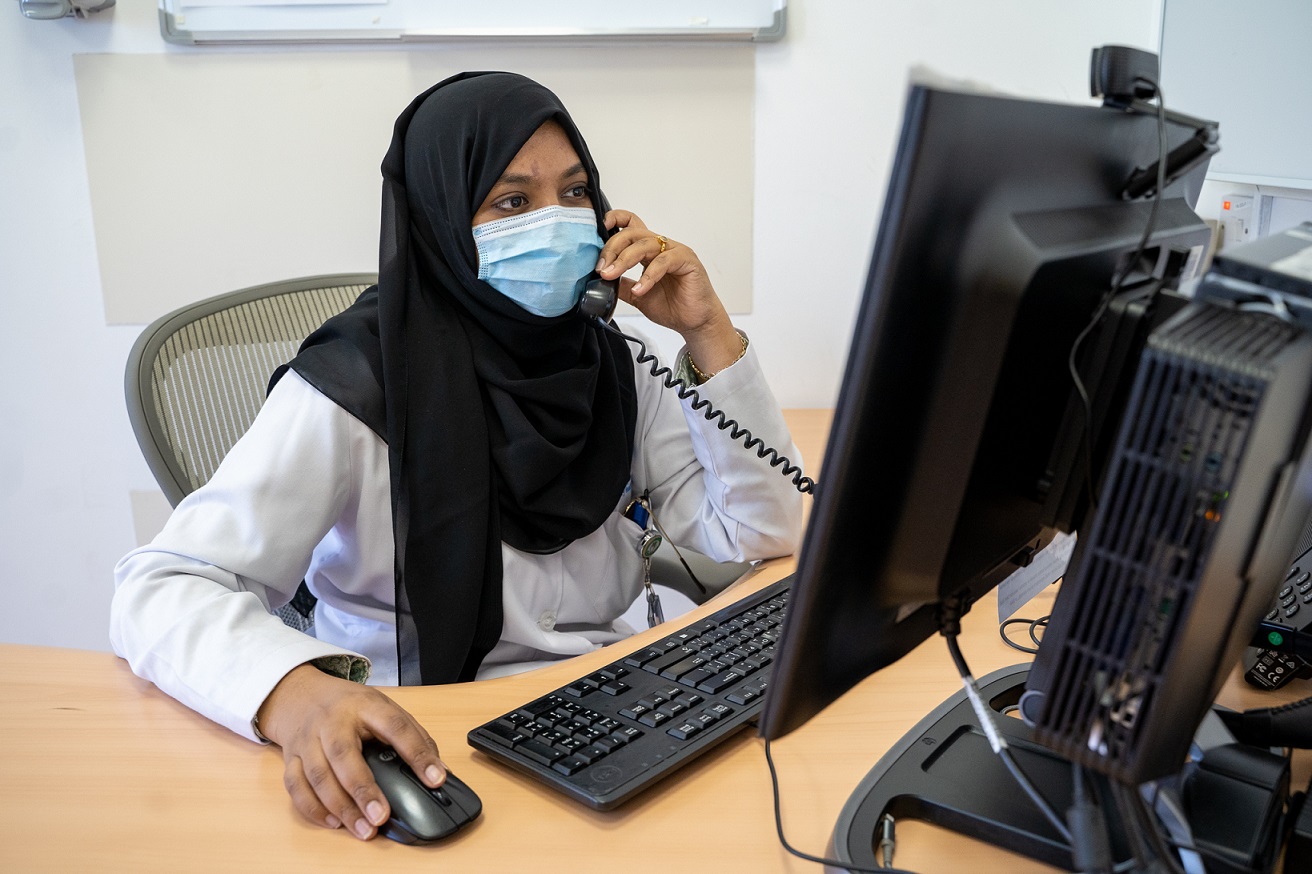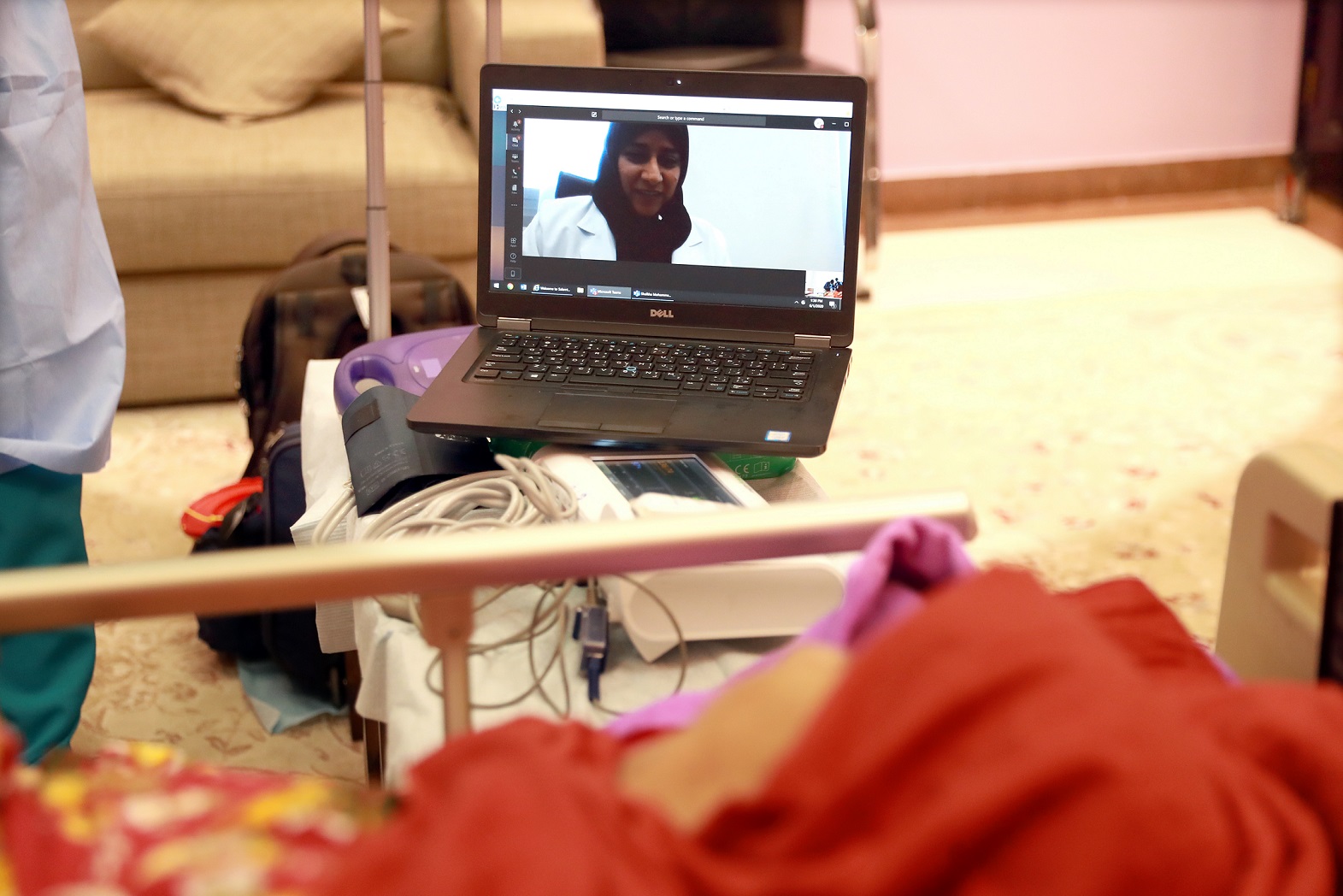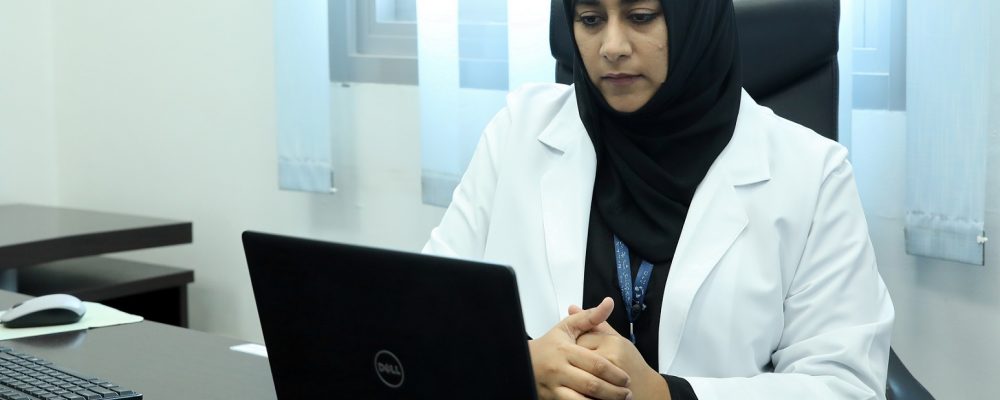The COVID-19 pandemic has challenged the global healthcare system at an unprecedented scale, demanding are set of industry best practices and causing service providers to take stock of how to reprioritize patient-centricity. But in parallel, the pandemic has acted as a transformation catalyst, accelerating the implementation and adoption of technology faster than ever before. The UAE’s response has vividly demonstrated the nation’s resilience and ability to bring innovations to market quickly, with new models of care that adopt remote healthcare solutions and digital technologies becoming mainstream across the national healthcare ecosystem.
With social distancing norms becoming habitual and medical practices steadily increasing their capacities, patient safety – while providing a high quality of care –remains the utmost priority. Providing an effective solution, telemedicine and telehealth-based interventions have successfully bridged the gap between doctors and patients.A healthcare network leading this innovation is Abu Dhabi Health Services Company (SEHA),who is marking one year since the incorporation ofan innovative consultation feature to their recently developed Telemedicine Virtual Consultations. The Telemedicine Virtual Outpatient Clinic (VOPC) was introduced in April 2020 as a permanent service to enhance patient experience at SEHA’s facilities, delivering more holistic medical care and accommodating additional patients than traditional care models would typically allow. Recently, the VOPC expanded its offerings to include video consultations, allowing patients and doctors facetime to foster openness and comfort during consultations. By allowing healthcare professionals to evaluate, diagnose and treat patients at a distance, this telecommunications technology not only empowers patients with increased access and a more connected level of care, but also promotes a highly patient-centric approach to healthcare management.
At hospitals and clinics managed by SEHA, clinicians have long been encouraging the use of this remote healthcare solution – particularly to reach elderly or chronically ill patients who require follow-up care. Since its launch, over 400,000 VOPC services have been successfully delivered – accounting for 9% of the total outpatient consultations. These resulted in 450,000 telemedicine prescriptions, representing 10% of all outpatient prescriptions.
VOPC proved particularly integral in providing patients a safe and simple alternative to physical appointments while still prioritizing their medical needs. It was particularly important during the UAE’s National Sterilization Program, ensuring that the community had access to regular, expert healthcare despite the restrictions. In addition, SEHA facilities scheduled medical prescriptions to be delivered to patients’ homes. The network also continued home consultation services for high-risk community members and introduced drive-through vaccination services for infants.
TELEMEDICINE AND PATIENT CARE IN THE UAE
The integration of virtual technology with traditional medical systems and processes sparked a shift in the healthcare sector, particularly at a time when non-essential consultations had to be deprioritized.Dr. Marwan Al Kaabi, Acting Group Chief Operations Officer, SEHA, commented,“With the adoption of technology at an all-time high, digital acceleration has been the cornerstone of SEHA’s commitment to elevate its delivery of care, with patients at the heart of everything we do. Since the launch of our Telemedicine Virtual Consultations, we saw digital engagement tools emerge as a popular method for patients to manage their health. Over the past year, we are proud of the platform’s success in ensuring the continuation of care without interruption and connecting patients, doctors and healthcare providers ever more seamlessly. With over400,000teleconsultations successfully delivered, representing an 83% satisfaction rate,the platform has further enabled patients to strengthen their roles in clinical decision-making, reshaping care delivery and setting a new benchmark for the local – and regional – the healthcare industry. These tech-based tools will undoubtedly revolutionize healthcare delivery for years to come.”
Discussing the platform’s utilization amongst patients, Dr. Asma Abdulla Hasan Al Marzouqi, Division Chief for Pediatrics – Medical Affairs, Sheikh Khalifa Medical City, added, “In the UAE, the population is predominantly younger and very much ‘switched on’ with multiple smart devices per household. These factors allowed the acceptance and uptake of telemedicine to rapidly spike, providing patients access to care from the safety of their homes helping maintain social distancing.VOPC provides patients with a convenient and safe consultation option, especially for follow-up visits.”
ENABLING GREATER EFFICIENCIES WITHIN THE HEALTHCARE SECTOR
Dr. Ibrahim Ismail Al Hosani, Consultant, Gastroenterology and Hepatology, Sheikh Shakhbout Medical City highlighted some of the key elements of harnessing the power of technology in healthcare, saying, “We are at a pivotal moment in medical history with many medical breakthroughs and disruptive technologies. By adopting telemedicine, healthcare providers can manage their capacities more efficiently, welcoming a higher number of physical visits for patients who have more dire healthcare needs or may have waited long periods due to scheduled follow-up visits. The technology allows us to dedicate the VOPC to follow-up and non-critical cases, therefore improving overall healthcare standards and expanding access to healthcare.”
“Although the platform has played a key role in infection control, we have also found that many of our patients have delayed urgent care or even felt reluctant about physical visits due to fear of contracting the COVID-19 virus. We must continue working closely with our patients to educate them on when to choose technology as a method to consult their doctors, and when they must trust the medical system’s excellent response and robust safety measure to seek a physical consultation,” he continued.
DIFFERENT NEEDS ACROSS DIFFERENT CLINICAL SPECIALTIES
As expected with any novel process or system, patients have expressed concern surrounding the efficacy and quality of medical services received via VOPC versus a physical consultation. Concerns lie in the importance of identifying the right diagnosis for a condition, and usually a physical examination by a medical practitioner is still vital for preliminary visits.
The application of telemedicine and VOPC is also dependent on the clinical specialty or subspecialty. Consultant Neurologist, Dr. Noha Osama Soliman, Tawam Hospital, explained the benefits of VOPC within her specialty, saying, “Neurology is one of the fields in medicine that is reliant on taking a detailed medical history from the patient and performing a meticulous neurological examination to appropriately diagnose the problem without risking the patient’s health. Approaching patients with neurological conditions remotely can be challenging, especially if it is a new patient. I would usually call the patient and understand their central complaint to assess whether the patient needs to come in for a physical consultation. As for patients with an established diagnosis, VOPC is very helpful in continuing their care remotely.”
Dr. Soha Said, Consultant & Chair of Obstetrics and Gynecology Department, Corniche Hospital,is excited about the possibilities of the platforms within her field. She noted, “Telemedicine is an excellent tool to help us monitor a patient’s condition, especially as pregnant women fall into the vulnerable group of the community, and COVID-19 very much remains a reality. The real opportunity for us in our field is delivering good news, test results or ensuring that a patient is on track with her treatment plan, remotely.”
“However, both innovations cannot completely replace the need to conduct prenatal and antenatal visits which involve extensive blood tests, scans, and other forms of monitoring to continue delivering an excellent level of care for both mother and baby,” she added.
The pandemic has demonstrated how healthcare systems can rapidly deploy new technologies and care models, with internet-first and home services rising to the forefront. Such promising solutions have paved a promising way forward for the future of the synergy between healthcare and technology, with patient care at the very core.






